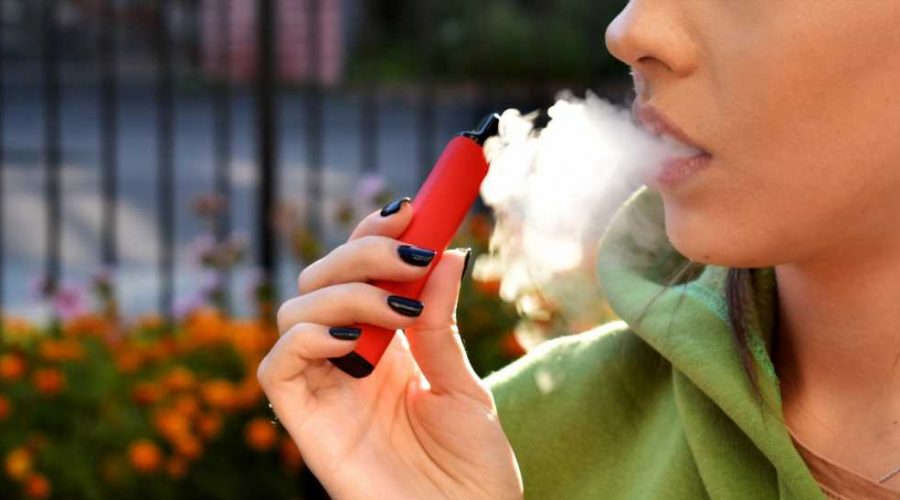Has FDA enforcement changed e-cigarette use among the US youth?
A recent JAMA Network Open study analyzed the extent of e-cigarette use among US youth after enforcement guidance from the US Food and Drug Administration (FDA).

Due to a significant increase in e-cigarette use in the US among youths, in January 2020, the FDA’s Center for Tobacco Products (CTP) formulated strategies to reduce e-cigarette use.
They published guidance and enforced priorities against “any flavored, cartridge-based ENDS [electronic nicotine delivery system] product (other than a tobacco- or menthol-flavored ENDS product).”
Furthermore, in July 2020, CTP issued a notice to many e-cigarette brands urging them to take youth-appealing e-liquid products off the market.
Background
The findings of the National Youth Tobacco Survey and the US arm of the International Tobacco Control Policy Evaluation Project Youth Tobacco and Vaping Survey provided an idea of device types, brands, and e-cigarette flavors, used among youths pre- and post-enforcement guidance set out by CTP in 2020.
These surveys indicated that a particular disposable e-cigarette brand was most popular among youths in 2020. It was observed that youths shifted from fruity and sweet-flavored cartridge products to similar-flavored disposable e-cigarette products.
However, these studies did not evaluate the distribution of e-cigarette flavors and device combinations favored by the American youth. This information is necessary to evaluate the effect of CTP’s 2020 enforcement guidance.
It is important to understand the within-person product switching. Furthermore, the assessment of e-cigarette continuation rates for those products which were prioritized for CTP’s enforcement efforts will shed light on the effectiveness of the enforcement efforts.
If e-cigarette continuation rates did not change based on the product flavor/device type used, the implementation of the enforcement efforts will indicate unsuccessful CTP enforcement efforts.
About the study
The current longitudinal study analyzed data from the Population Assessment of Tobacco and Health (PATH) Study, which is associated with determining the extent of tobacco use among youths in the US.
This study analyzed data compiled between December 2018 to November 2019 (wave 5, referred to as 2019 hereafter) and between March 2021 and November 2021 (wave 6, referred to as 2021 hereafter). All data were obtained through in-person interviews or telephone audio computer-assisted self-interviews. The demographic details of the participants were also collected.
The 2019 data included interviews with individuals above 12 years of age, while the 2021 data contained interviews with youths over 14 years of age. The maximum age of participants considered in this study was 20 years.
The participants were asked about their e-cigarette use and their preferred flavor.
The e-cigarette flavors were categorized into six mutually exclusive and exhaustive categories, namely: tobacco flavor; menthol/mint flavor only; non-tobacco flavor only, non-mint/menthol flavor (sweet flavor); sweet and mint/menthol flavor (no tobacco flavor); mint/menthol and tobacco flavor (no sweet flavor); and sweet and tobacco flavor (with or without mint/menthol flavor).
The e-cigarette devices were categorized as disposable products, cartridge products, and tank or mod systems. A total of 19-level flavor/device combination variables were clubbed into 3-level variables to align with CTP’s 2020 e-cigarette enforcement guidance.
Study findings
The 2019 population (12 to 17 years of age) of this nationally representative longitudinal US cohort study comprised 51% males and 49% females. Notably, this study did not observe any differences in e-cigarette continuation rates among youths after CTP’s enforcement efforts in 2020.
Around 84% of the youths who used sweet/cartridge e-cigarettes in 2019 continued using e-cigarettes in 2020 but switched to a different flavor/device combination.
The findings of this study indicate that CTP’s partial e-cigarette enforcement efforts have some shortcomings, which have been exploited by the youth in order to continue using e-cigarettes. For instance, youths continued to use flavored e-cigarettes by using devices not covered by the enforcement guidance.
Previous studies have indicated significant volatility in the e-cigarette market, which is probably also partly responsible for the changes seen in this study.
Overall, there was no change in youth preference for e-cigarette flavors in 2019 and 2021. Consistent with the findings documented in previous studies, a marginal increase in the use of disposable products and a reduction in the use of cartridge products were observed in this study.
Conclusions
Although previous studies have highlighted that co-occurring policies and events have decreased e-cigarette use, the current study observed no change in e-cigarette use among youths after CTP implementation.
The current study provided evidence that indicated similar e-cigarette continuation rates between youth who used targeted e-cigarettes and those who used other e-cigarettes. Youths who continued to use e-cigarettes in 2021 switched to flavor/device combinations that were not included in CTP’s enforcement priorities.
- Kasza KA, Hammond D, Reid JL, et al. (2023). Youth Use of e-Cigarette Flavor and Device Combinations and Brands Before vs After FDA Enforcement. JAMA Network Open, 6(8):e2328805. doi:10.1001/jamanetworkopen.2023.28805. https://jamanetwork.com/journals/jamanetworkopen/fullarticle/2808247
Posted in: Child Health News | Device / Technology News | Miscellaneous News
Tags: Cigarette, Food, Nicotine, Tobacco, Vaping

Written by
Dr. Priyom Bose
Priyom holds a Ph.D. in Plant Biology and Biotechnology from the University of Madras, India. She is an active researcher and an experienced science writer. Priyom has also co-authored several original research articles that have been published in reputed peer-reviewed journals. She is also an avid reader and an amateur photographer.
